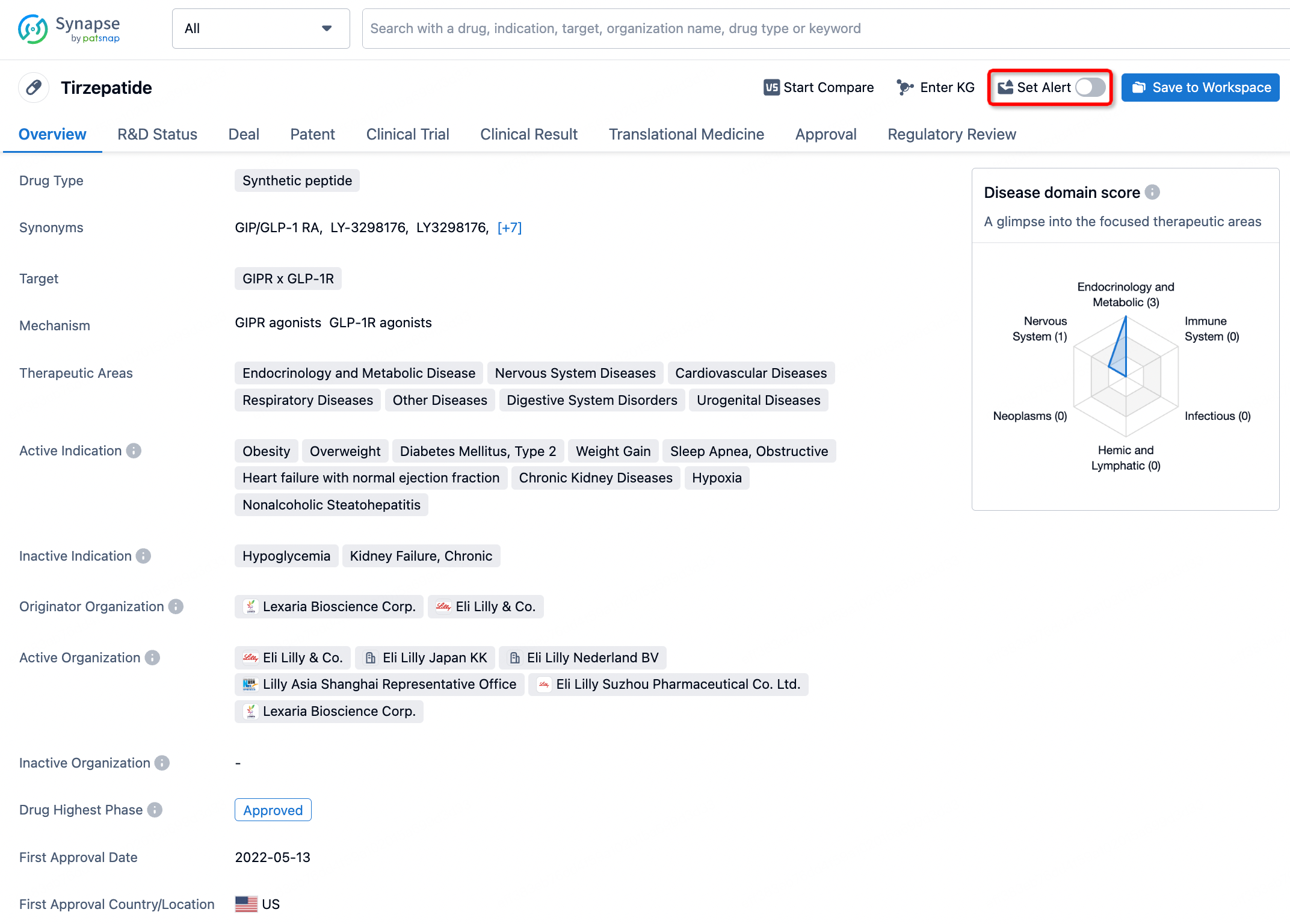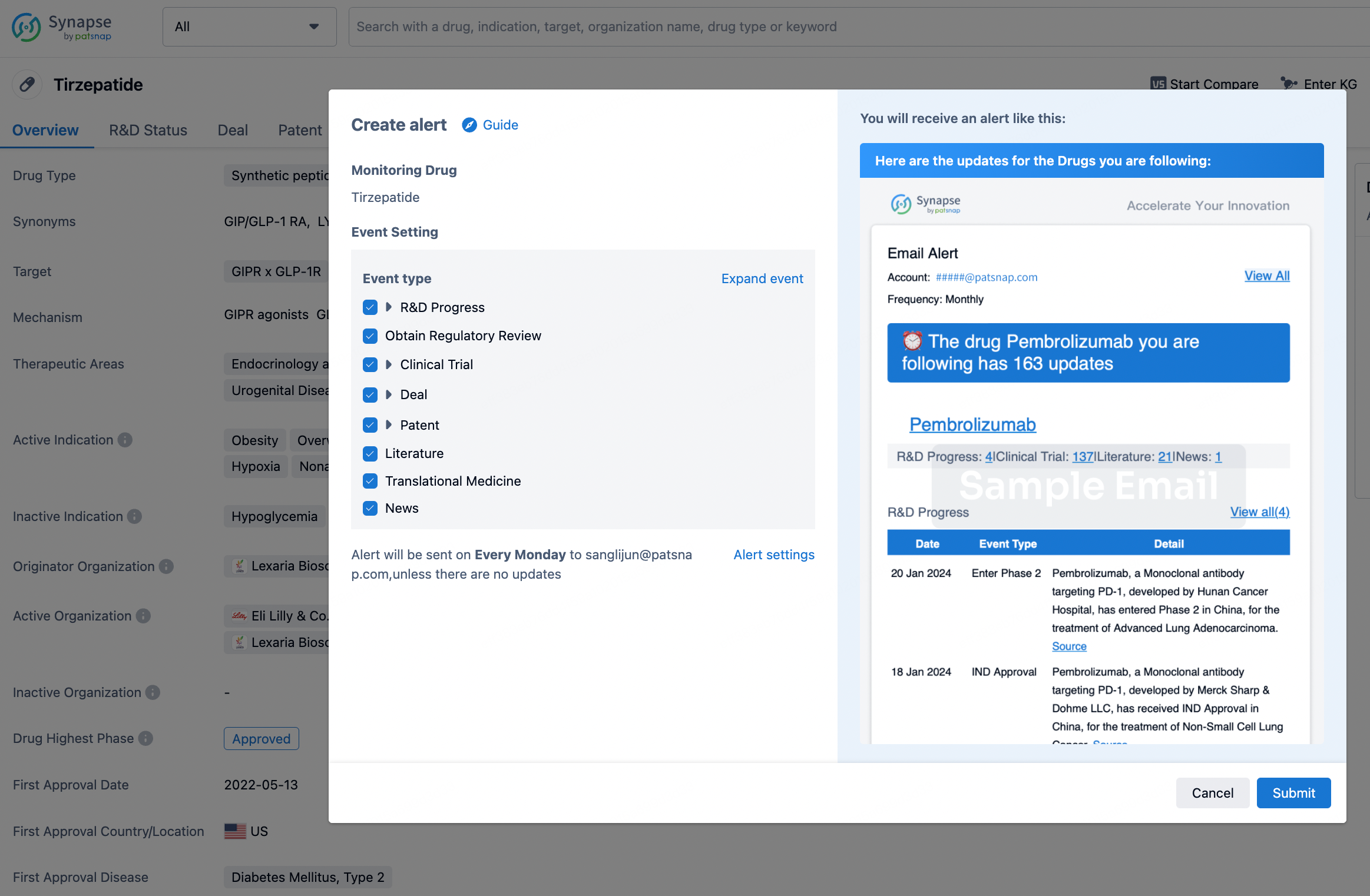Request Demo
What is the mechanism of Sodium Acetate?
17 July 2024
Sodium acetate, with the chemical formula CH3COONa, is a versatile compound that finds applications in various fields ranging from food preservation to medical treatments and chemical synthesis. Understanding the mechanism of sodium acetate is crucial for optimizing its use in these applications.
At its core, sodium acetate is the sodium salt of acetic acid. When dissolved in water, it dissociates into sodium ions (Na+) and acetate ions (CH3COO-). This dissociation is the foundational mechanism that determines how sodium acetate interacts in different environments.
In aqueous solutions, the acetate ion acts as a conjugate base of acetic acid. This means it can accept protons (H+) from the solution, thus influencing the pH. Specifically, sodium acetate solutions are mildly alkaline due to the presence of the acetate ion, which can react with water to form acetic acid and hydroxide ions (OH-). The chemical reaction can be represented as:
CH3COO- + H2O ⇌ CH3COOH + OH-
This reaction explains why sodium acetate solutions tend to have a pH greater than 7.
One of the most well-known applications of sodium acetate is its use in heating pads. Sodium acetate trihydrate can supercool to a liquid state below its melting point. When it is triggered, typically by flexing a small metal disc within the heating pad, it crystallizes rapidly, releasing heat in an exothermic reaction. The crystallization process can be reversed by heating the pad, melting the sodium acetate back into a liquid state, ready to be used again.
Another significant application of sodium acetate is in the food industry, where it serves as a food preservative and flavoring agent. As a preservative, it helps to inhibit the growth of bacteria and fungi, thus extending the shelf life of various food products. Additionally, it imparts a mildly acidic taste, enhancing the flavor profile of many dishes.
Sodium acetate also plays a crucial role in various chemical processes. In organic synthesis, it is often used as a buffering agent to maintain a stable pH during reactions. Furthermore, in the textile industry, it is utilized to neutralize sulfuric acid waste streams and improve the dye fixation on fabrics.
In medical treatments, sodium acetate is employed in intravenous solutions to correct sodium levels and treat metabolic acidosis. It is administered in a controlled manner, where it dissociates into sodium and acetate ions, the latter of which is metabolized to bicarbonate, helping to restore the body's pH balance.
In conclusion, the mechanism of sodium acetate revolves around its dissociation into sodium and acetate ions, which interact with their environment in ways that can influence pH, generate heat, preserve food, or participate in chemical reactions. Understanding these mechanisms allows for the effective and efficient use of sodium acetate across a variety of applications.
At its core, sodium acetate is the sodium salt of acetic acid. When dissolved in water, it dissociates into sodium ions (Na+) and acetate ions (CH3COO-). This dissociation is the foundational mechanism that determines how sodium acetate interacts in different environments.
In aqueous solutions, the acetate ion acts as a conjugate base of acetic acid. This means it can accept protons (H+) from the solution, thus influencing the pH. Specifically, sodium acetate solutions are mildly alkaline due to the presence of the acetate ion, which can react with water to form acetic acid and hydroxide ions (OH-). The chemical reaction can be represented as:
CH3COO- + H2O ⇌ CH3COOH + OH-
This reaction explains why sodium acetate solutions tend to have a pH greater than 7.
One of the most well-known applications of sodium acetate is its use in heating pads. Sodium acetate trihydrate can supercool to a liquid state below its melting point. When it is triggered, typically by flexing a small metal disc within the heating pad, it crystallizes rapidly, releasing heat in an exothermic reaction. The crystallization process can be reversed by heating the pad, melting the sodium acetate back into a liquid state, ready to be used again.
Another significant application of sodium acetate is in the food industry, where it serves as a food preservative and flavoring agent. As a preservative, it helps to inhibit the growth of bacteria and fungi, thus extending the shelf life of various food products. Additionally, it imparts a mildly acidic taste, enhancing the flavor profile of many dishes.
Sodium acetate also plays a crucial role in various chemical processes. In organic synthesis, it is often used as a buffering agent to maintain a stable pH during reactions. Furthermore, in the textile industry, it is utilized to neutralize sulfuric acid waste streams and improve the dye fixation on fabrics.
In medical treatments, sodium acetate is employed in intravenous solutions to correct sodium levels and treat metabolic acidosis. It is administered in a controlled manner, where it dissociates into sodium and acetate ions, the latter of which is metabolized to bicarbonate, helping to restore the body's pH balance.
In conclusion, the mechanism of sodium acetate revolves around its dissociation into sodium and acetate ions, which interact with their environment in ways that can influence pH, generate heat, preserve food, or participate in chemical reactions. Understanding these mechanisms allows for the effective and efficient use of sodium acetate across a variety of applications.
How to obtain the latest development progress of all drugs?
In the Synapse database, you can stay updated on the latest research and development advances of all drugs. This service is accessible anytime and anywhere, with updates available daily or weekly. Use the "Set Alert" function to stay informed. Click on the image below to embark on a brand new journey of drug discovery!
AI Agents Built for Biopharma Breakthroughs
Accelerate discovery. Empower decisions. Transform outcomes.
Get started for free today!
Accelerate Strategic R&D decision making with Synapse, PatSnap’s AI-powered Connected Innovation Intelligence Platform Built for Life Sciences Professionals.
Start your data trial now!
Synapse data is also accessible to external entities via APIs or data packages. Empower better decisions with the latest in pharmaceutical intelligence.


